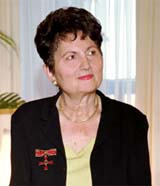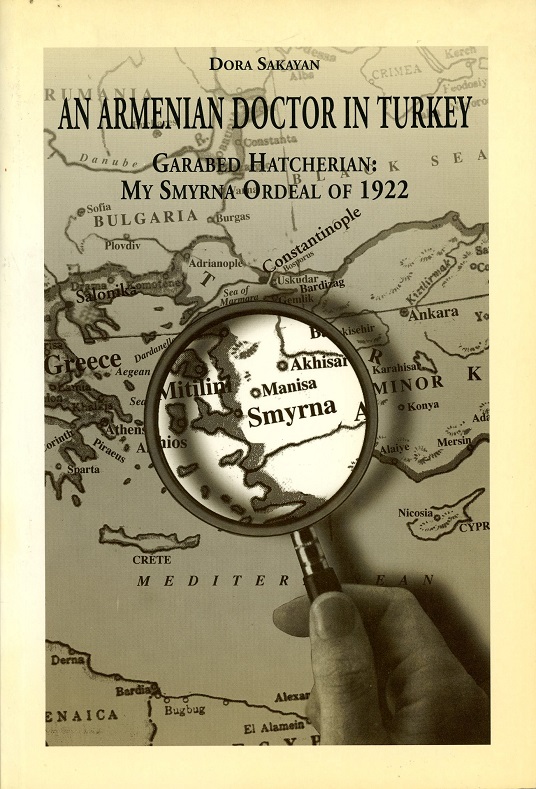Brief biography of DR. GARABED' HATCHERIAN(1876-1952)2
Dr. Garabed Hatcherian was born in 1876 in Bardizag3, also known by its Turkish name, Bakhchedjik. The name Bardizag was given to a group of eight small villages in the province of Izmit (Nicomedia). Five of these villages were populated by Armenians, one by Greeks, and two by Muslims. At the turn of the century, Bardizag had a predominantly Armenian-speaking population of 10,500 (Der-Hagopian 1960: 32), hence the Armenian name, meaning "little garden." Bardizag borders the Sea of Marmara in northern Turkey, not far from Constantinople. The town was founded in the 17th century by Armenians fleeing from their original village Bardizag in Sebastia which, at that time, had become a battlefield in the Turco-Persian war.
The favorable geographical location of the new Bardizag on the wooded hillside slopes with its salubrious sea air, charming stone houses, and picturesque flower gardens, made it an attractive summer resort for the wealthy Armenian intelligentsia from Constantinople and environs. Bardizag was known not only for its natural physical beauty, but also for its vibrant cultural life, with eight Armenian schools (including a college), several Armenian churches representing three Christian denominations (Apostolic, Catholic, and Protestant), at least three Armenian newspapers and periodicals, and a lively amateur theatre. Bardizag was also known for its fine medical and pharmaceutical services, and for its many good physicians and pharmacists. Despite its modest size, Bardizag was a hive of literary activity, where both oral and written Armenian were held in high esteem. In short, the stimulating environment of Bardizag was representative of the Armenian literary and cultural revival in 19th century Anatolia.
It was under these circumstances that the young Garabed Hatcherian began his schooling at the local Armenian and American schools and at the Turkish school in Nicomedia. In 1895, he began his medical studies at the Constantinople School of Medicine from which he graduated in 1901, specializing in General Medicine and Gynaecology. During the last years of his medical studies, he worked in the Armenian and French hospitals of Constantinople. He was then appointed a municipal doctor in Bursa where he worked for almost ten years. Returning to his home town of Bardizag in 1910, he pursued his career as a private physician. During this time, he also taught courses on health and hygiene as well as civic education at the local Armenian schools until the World War I. In 1907, he married Elisa Costanian (born in Akhisar, near Smyrna) and they had three boys: Hatcheres (1909), Krikor (1913) and Hovhannes (1916), and two girls: Sirarpi (1911) and Vartouhi( 1921).
In 1914, along with 1,500 young men from Bardizag, Dr. Hatcherian was conscripted into the Turkish army and served there as a medical officer for the duration of World War I. For his excellent military service in Constantinople, the Dardanelles, Smyrna, and Romania, he was decorated with high military medals. During his military service in 1915, the Armenian population of Bardizag was massacred or deported, and the Armenian Bardizag was ravaged and destroyed (Mkhalian 1938, Der-Hagopian 1960).
After his discharge from the army in 1918, Dr. Hatcherian settled down with his family in Smyrna, to be nearer to his wife's family and their estate in her ancestral birthplace, Akhisar. In Smyrna, Dr. Hatcherian was soon to achieve social prominence. He held the position of general surgeon and gynaecologists at the Armenian National Hospital. Concurrently, he also became the physician in charge of general and internal medicine at the outpatient clinic of this hospital. In 1922, during the Smyrna catastrophe (see p. 57, note 2) his career came to an abrupt end. Within a matter of days, Dr. Hatcherian lost his livelihood and his home, and was arrested by the Turks for the crime of being Armenian. After suffering greatly himself and witnessing the agony of his fellow Christians for six days, he was released from prison. On September 24, 1922, the Hatcherian family managed to escape to the Greek island of Mitilini, leaving behind in Akhisar ten members of the extended family on both sides. All ten family members, including the mothers and brothers with their families, were massacred after the occupation of Akhisar by the Kemalist army.
In the Spring of 1923, Dr. Hatcherian moved with his wife and his children from Mitilini to Salonika, Greece, where the refugee family decided to settle down. There he was appointed the chief physician of the local chapter of the Armenian General Benevolent Union's (AGBU) pediatric clinic, which he had been instrumental in founding. After the closing of the pediatric clinic, Dr. Hatcherian practiced in Salonika as a family doctor and gynaecologist. His patients consisted largely of Armenian and Greek refugees.
In 1950, Dr. Hatcherian and his wife Elisa, together with their two sons, Krikor and Hovhannes, and their youngest daughter Vartouhi and her family joined the eldest son, Hatcheres, who was then living with his family in Paris. In 1951 they all moved to Argentina, where the extended family — with the exception of the older daughter Sirarpi —settled in Buenos Aires. There, Dr. Hatcherian passed away in 1952.
During his entire lifetime, Dr. Hatcherian devoted his talents and energy to the welfare of the Armenian community, wherever he lived. Besides being a respected physician, he also became a prominent Armenian public figure. He was known as a capable administrator and organizer of many community institutions. In 1908, he co-founded a chapter of the Armenian General Benevolent Union (AGBU) in Bardizag and was its president for many years. While still at this post, he also served as head of the local Armenian Civil Council for two years (1911-1913). In Smyrna, he became a member of the Judiciary Council (1919-1921), serving at the same time as its secretary for a term of one year. In Mitilini, as in Salonika, he organized Relief Committees as part of the humanitarian efforts for the Armenian refugees. In Salonika, he dedicated himself even more extensively to public service. He became chairman of the Municipal Council in 1927 and chairman of the Judiciary Council in 1928. For years, he undertook the duties of chairman of the Church board of trustees or assumed various other functions within it. During all the years in Salonika, he was an active member of the AGBU, subsequently serving as chairman of its local chapter.
Ascribing great importance to the advancement of education, Dr. Hatcherian participated in the organization and improvement of the local Armenian school system. He administered the funds of the Gullabi Gulbenkian School in Salonika, serving as chairman of its board of trustees. Due to his political neutrality, he willingly gave his support to any Armenian educational institution regardless of its political affiliation. For instance, he served for many years as chairman of the board of trustees of the National School (Azgayin Varzharan), which was controlled by the Dashnak political party.
Dr. Hatcherian authored many articles for local newspapers that covered Armenian community life. Being interested in public health, he also wrote medical articles promoting prevention and cure of disease. During the twenties, he was the coeditor of the Armenian medical journal Բժիշկ (The Physician). Throughout his lifetime, he was a contributor to the medical journal Հայբուժ (The Armenian Therapist).
Dr. Garabed Hatcherian was a respected citizen and physician, a great Armenian patriot, and a devout Christian. He was an idealist who espoused no political party, but strongly believed in the benevolent goals of the AGBU and was one of its most ardent supporters. Love for his people, and his vision of a better future for them, inspired him to serve their needs unfailingly, carrying out his professional and civic duties with great integrity and dedication.


